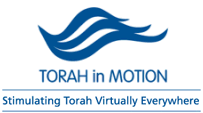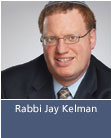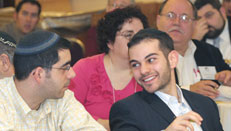 |
||||||||||||
| Weekly Parsha | ||
| Current Week | ||
| Parsha Archives | ||
| Business Ethics | ||
| Dr. Malamet Speaks Out | ||
| TiM MP3 Library | ||




A Thought for the Week with Rabbi Jay Kelman |
 Simcha shel mitzvah , the joy of a mitzvah. This is the essence of Shmini Atzeret and Simchat Torah . There is no historical event to commemorate, no agricultural motif to acknowledge. After three weeks of intensive Jewish living, in which we beseech G-d to grant us a Shanna Tova, we feel a little more spiritual, a little closer to G-d. We do not want to let go, so we have a day to celebrate the bonding of G-d and the Jewish people. This is true Simchat Torah as we celebrate our renewed commitment to living closer to G-d. This is the ultimate celebration. We dance, sing and join together as we encircle the bima, holding our tree of life, our guidebook, the Torah. During the festival of Sukkot , which immediately precedes Simchat Torah , we encircle the Sefer Torah holding our lulav and etrog . Both the hakafot, with the lulav on Sukkot and with the Torah on Simchat Torah , consist of a circular movement around a centre. A circle is the symbol of unity and togetherness. There is no head of the line, no back row seat; in a circle each and every person is equidistant from the centre, from G-d. Every single Jew, whether a Talmudic scholar or a simple person, has equal access to G-d. All G-d desires is that we be sincere: "Whether one does more or whether one does less, (it does not matter) provided your heart is directed towards heaven" (Talmud Berachot 5b). Rav Soloveitchik, zt"l, points out (source) that in a circle, the point of departure is the point of arrival. Jewish history imbues the present. We do not only remember history, we actually relive it. We experience the Pesach seder , we actually move into the sukkah . Just telling the story, in and of itself, can make no lasting impact. Abraham is not some old Jew who lived thousands of years ago, but someone who lives with us each and every day as we embody his attribute of chesed . There is, however, a basic difference between the hakafot on Sukkot and those on Simchat Torah . On Sukkot , it is the Torah that is placed in the centre, signifying its central importance in Jewish life. On Simchat Torah , however, the Torah forms part of the circle as we march around an apparently empty centre. Rav Soloveitchik explains that the centre is not empty at all; the Divine presence is resting there. We are marching around G-d. Judaism teaches that the way to reach G-d is through the observance of the mitzvoth in the Torah. Judaism is very wary of subjective religious feeling; it demands the following of objective standards, as presented by G-d and interpreted by our Sages in each generation. It is mitzvoth like Shabbat, Kashrut , and Mikvah that provide the way to come closer to G-d. Unfortunately, people often get so "bogged down" in the details of the mitzvoth, they forget that their ultimate purpose is to bring us closer to G-d. They are willing to dance with the Torah, but sometimes, they forget that G-d is in the centre. The mitzvoth can become habitual, devoid of much of their meaning. How else to explain Jews who meticulously observe every ritual, yet forget that G-d oversees their business practices? Some people have made the tragic error of equating Judaism with ritual. G-d is first and foremost the G-d of ethics. Torah and mitzvoth must be the key to our lives. But as we circle through life with the Torah, we must remember that G-d is the centre of everything we do. Constant awareness that G-d is always before us will ensure that the circle of those dedicated to the beautiful way of life that Judaism offers will grow ever wider. |
|
|

 |
 |